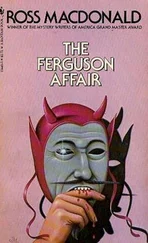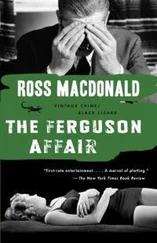Yet behind the good cheer of National Socialist propaganda lay a reality of coercion and terror. What the Nazis euphemistically called “synchronization” ( Gleichschaltung ) began on March 10, 1933, with the arrest of between fifteen and twenty Communist Party, Communist trade union, and Social Democratic officials and the occupation of the Social Democratic trade union headquarters. The left-liberal Lord Mayor ( Oberbürgermeister ) Robert Wild was sent on indefinite leave; his deputy resigned on grounds of age. A week later the purge of left-leaning officials continued with the forced retirement of the chief of police, the director of the city hospital, the chief medical officer, and the head of the health insurance fund. More arrests of Communist activists followed on March 28 and April 25: most were detained in “protective custody” ( Schutzhaft ), another Nazi euphemism, signifying that they had been sent to the newly created penal camp at Dachau, a hundred miles to the south.
Synchronization proceeded relentlessly; each week brought further restrictions on the Nazis’ political opponents. The press ceased to be free on April 1, with the announcement that henceforth the Fürther Anzeiger would be the “official organ of the NSDAP in the Fürth district.” The local council was reconstituted so that a majority of its members were now Nazis, including the new Lord Mayor, Franz Jakob (previously a Nazi deputy in the Bavarian parliament), and his two deputies. The local libraries were also purged with a ceremonial burning of “subversive” books on the night of May 10–11. 5The next day the Fürth branch of the Social Democratic Party dissolved itself, in advance of the nationwide ban on its activities on June 22. On June 30 the party’s leaders in Fürth were arrested and sent to join their Communist counterparts in Dachau. All the old middle-class parties, who had lost so many of their supporters to the Nazis, were either dissolved or merged with the NSDAP. Young Bavaria was absorbed into the Hitler Youth. Similar fates befell all Fürth’s independent economic organizations and sporting associations — even the singing and gardening clubs. 6
From the earliest phase of the National Socialist regime, however, it was the Jews who were targeted for the most relentless persecution. After their leaders had been arrested, the ordinary rank-and-file Communist and Social Democratic voters had the chance to conform and consent. This chance was not given to anyone whom the Nazis defined as Jewish by race, which included converts to Christianity and even the issue of mixed marriages. To understand what it was like to grow up as a Jew in Nazi Germany, it is necessary to grasp the way the regime systematically sliced away the rights of Jews, week after week, month after month. With every passing year between 1933 and 1938, the level of insecurity went up. The experience was especially harrowing in a town like Fürth. Not only had it earned the Nazis’ contempt as a “jewified” town. It was also next door to Nuremberg, one of the “capitals of the movement” and home of the odious Julius Streicher, editor of Der Stürmer and now gauleiter of Middle Franconia. Moreover, Fürth was in Bavaria, where the SA leader Ernst Röhm was state commissar and the Reichsführer-SS Heinrich Himmler was in charge of the Political Police. All this meant that anti-Semitic measures and “spontaneous” actions tended to come sooner to Fürth than elsewhere and to be implemented with more zeal. 7
Readers who have no experience of life in a totalitarian state must struggle to imagine what it is like, in the space of five years, to lose the right to practice one’s profession or trade, to use public facilities from swimming pools to schools, and to speak freely; more important, to lose the protection of the law from arbitrary arrest, abuse, assault, and expropriation. This was the fate of the Jews of Germany between 1933 and 1938. In Fürth it began on March 21, 1933, with the suspension and temporary arrest of the director of the town hospital, Dr. Jakob Frank. Two other Jewish doctors and a nurse were also fired. A week later all nine Jewish doctors in Fürth lost their posts. 8The Nazis then turned their attention to Fürth’s large Jewish business community. On March 25 the well-known general store Bauernfreund-Pachmayr was forced to close amid allegations that mouse droppings and animal hair had been found in its food. 9Six days later a NSDAP demonstration heralded the next day’s nationwide boycott of Jewish business, ostensibly in retaliation for the anti-German boycott proposed by some American Jewish organizations. On the morning of April 1, SA men began putting up posters throughout the town center that urged citizens to “Boycott the Jews! Boycott their cronies [ Handlangern ]” and listed all 720 of Fürth’s Jewish-owned businesses, which represented at least 50 percent of wholesalers, 24 percent of manufacturers, and 15 percent of retailers — remarkable market shares for less than 4 percent of the population. 10One especially prominent target of the boycott was the Jewish-owned Fortuna cinema. 11Next it was the turn of Jewish civil servants — including teachers in public schools like Louis Kissinger — who were ejected from their posts under the April 1933 “Law for the Restoration of the Career Civil Service.” Another major legislative milestone were the so-called Nuremberg Laws, drafted at the party’s annual gathering in 1935, the first of which — the “Law for the Protection of German Blood and Honor”—prohibited mixed marriages as well as interracial sex and banned Jews from employing non-Jews as domestic servants. The second “Reich Citizenship Law” deprived Jews of full citizenship.
Discrimination against Jews was mandated centrally but enforced and sometimes also extended locally. The segregation of Jews — their exclusion from public spaces — proceeded at different paces from region to region. In Fürth, for example, it was at the height of the summer heat, in August 1933, that Jews were banned from using the public bathing area in the River Rednitz. In April 1934 a ceiling of 1.5 percent was imposed on the proportion of Jewish pupils that could study at public schools. By 1936, however, all the major Fürth schools — the Girls’ Lyceum, the Humanistic Gymnasium, the Oberrealschule, and the Commercial School — could proudly proclaim themselves “Jew-free” ( judenrein ). Henceforth all Jewish children had to attend either the Jewish Realschule or the Jewish Volksschule. 12
As rights were stripped away, so too was dignity. The Fürther Anzeiger published a steady stream of anti-Semitic articles in the sneering style of Streicher. The author of one typical story described hearing Jewish schoolchildren singing the German national anthem. “Oh you comical Jew folk,” he gloated. “How you must fear the Germany that is now being built.” 13On May 27, 1934, Streicher himself was made an honorary citizen of Fürth. In his acceptance speech, he did not mince his words: “We are heading toward serious times. If another war comes, all the Jews in Franconia will be shot, [because] the Jews were responsible for the [last] war.” 14The annual Fasching parade the following year featured a number of grotesquely anti-Semitic floats, with clowns dressed as caricature Jews in various humiliating postures. 15But anti-Semitism in Bavaria was much more than playacting. Already in 1933 there was more than a hint of physical menace in the way the SA conducted the boycott campaign. Where this might lead became clear on the night of March 25, 1934, when the village of Gunzenhausen, around thirty miles southwest of Fürth, erupted in a pogrom that left two of the local Jewish community dead: one from hanging, the other from stab wounds. 16
Читать дальше











